netter156
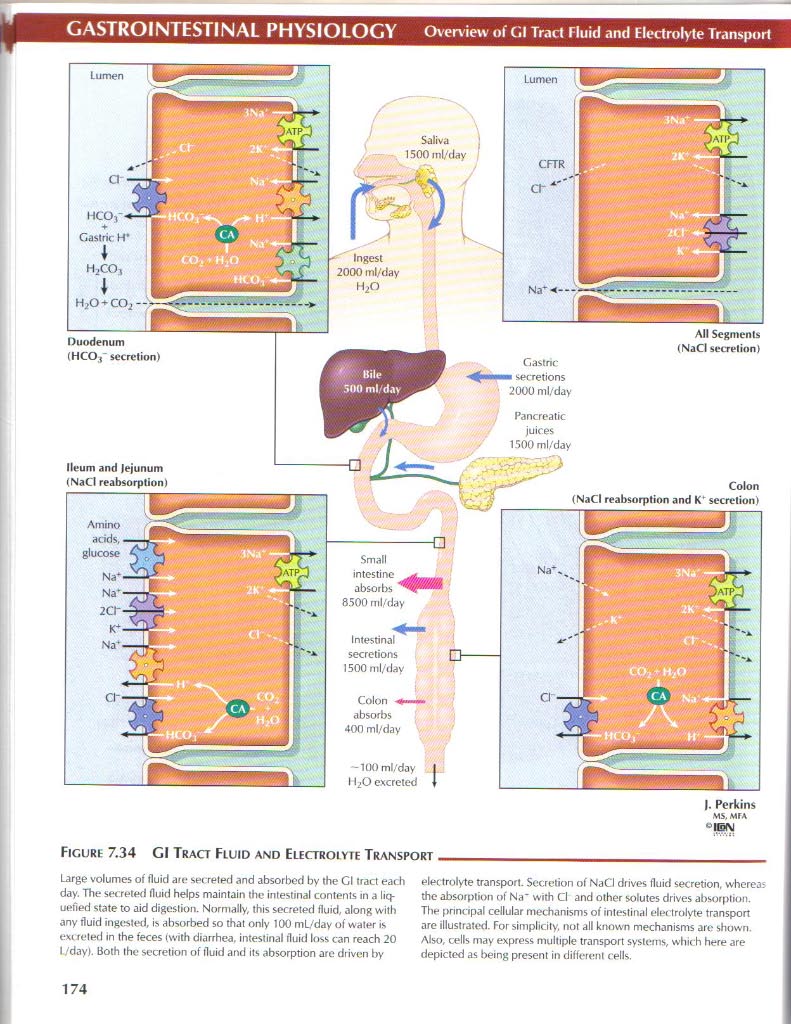
GASTROINTESTINAL PHYSIOLOGY Overvievv of Cii Trać! Fluid and Electrolyte Transport
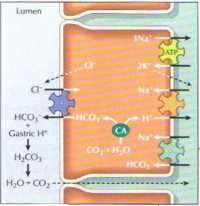
Ingest
2000 ml/day HjO
Duodenum (HCOj- secretion)
Saliva
1500 ml/day
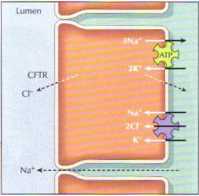
Amino
adds,
glucosc
lleum and Jejunum (NaCl reabsorplion)
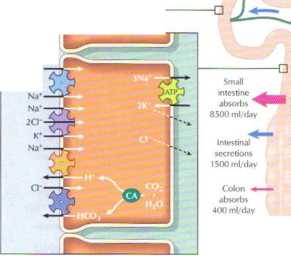
—100 ml/day I GO excreted
(NaCl reabsorplion and K' secretion)
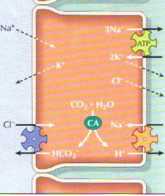
|. Perkins
°WBN
Figurę 7.34 Cl Tract Fluid and Electroiyte Transport
Large volumes of fluid aro sec reted and absorbed by the Cl tract eath day. The secreted fluid helps maintain the intestinal contents in a liq-uefied State to aid digestion. Normally, this secreted fluid, along with any fluid ingested, is absorbed so that only 100 mL/day of water is exireted in the feces (with diarrhea, intestinal fluid loss can reach 20 l /day). Both the secretion of lluid and its absorption are diiven by electrolyte transport. Secretion of NaCl drives fluid secretion, wherea: the absorption of Na* with Cl and other solutes drives absorption. The principal cellular mechanisms of intestinal electrolyte transport are illustratod. For simplicity, not all known mechanisms are shown. Also, cells may express mulliple transport Systems, which here are depicted as being present in diffcrent cells.
174
Wyszukiwarka
Podobne podstrony:
netter158 GASTROINTESTINAL PHYSIOLOGY Digestion of Carbohydrales Maftose Pancreatic amyiase
netter53 CARDIOVASCULAR PHYSIOLOGY Overview of thc Cardiovascular System Pulmonary
11871 netter148 Pancreas Structuri-GASTROINTESTINAL PHYSIOLOGY V / Root of Superio
47750 netter160 GASTROINTESTINAL PHYSIOLOGYAbsorption of Essential Elements and Vitamins Iron Elem
netter124 GASTROINTESTINAL PHYSIOLOGY Lowrr Esophageal Sphincter mm Mr Normal LES tonę is physiologi
netter132 GASTROINTESTINAL PHYSIOLOGY Appetite and Hunger Smell I Vcntomcdial hypothalami .offood 1
netter140 GASTROINTESTINAL PHYSIOLOGY Smali Intestinc Structure: III Mitochondria Tight junctions ■
więcej podobnych podstron